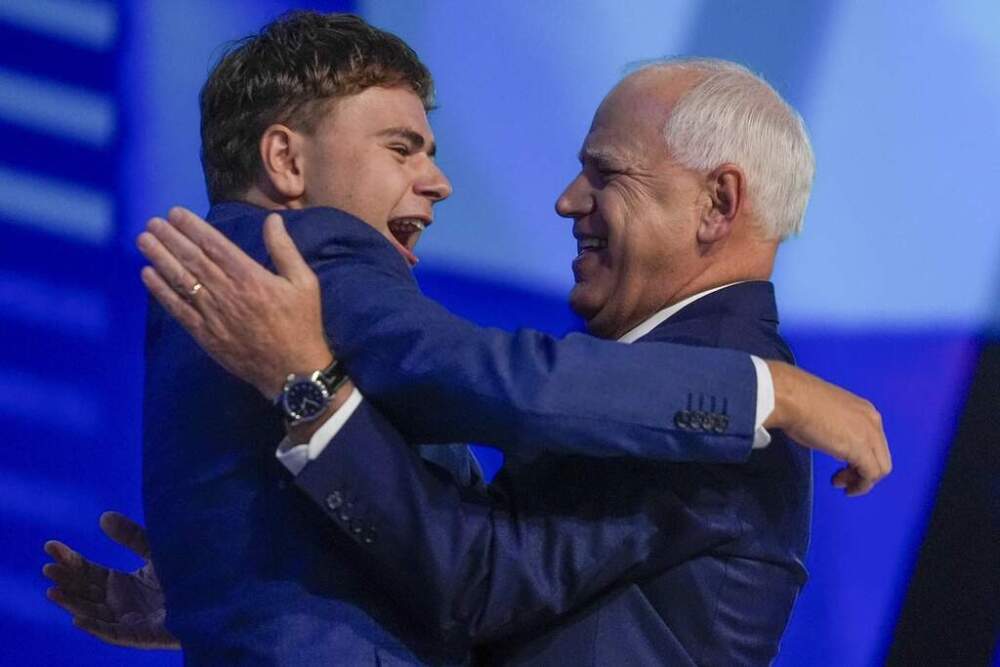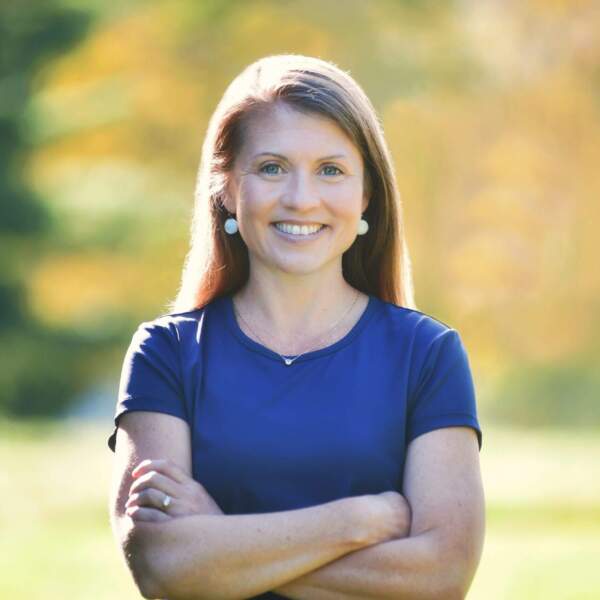Advertisement
Commentary
We can build a culture of belonging — one that includes people with disabilities

As we enter another school year, I’m surprised to write that our daughter Penny has started a program at a local university. Penny is 18 years old, and she has Down syndrome. I’m not surprised by her enrollment because of her inherent capabilities. I’m surprised because when she was born, I didn’t have any imagination for education that continued beyond high school for her. When I think of what made it possible for her to attend this program, I think of all the other parents who have paved the way for decades, including — most recently — vice presidential nominee Tim Walz.
Walz didn’t mention disability or neurodivergence at the Democratic National Convention, where most of America met his son Gus. But he did offer the American people a vision of what it looks like for people with disabilities to belong. A video of Gus crying and exclaiming, “That’s my Dad!” went viral, alongside the information that Gus has been diagnosed with a non-verbal learning disorder (NLD), an anxiety disorder and ADHD. The image of their embrace — a moment of mutual pride, respect and affection between father and son — helps to shape our collective imagination about what is possible for the millions of teenagers affected by disability.
Over these past two decades of my daughter’s life, we’ve learned all sorts of things, including how much public policy shapes the landscape of possibility for young adults like her. But we’ve also learned how much the mindset we have towards disability affects our vision for Penny’s present and future reality. Our culture often underscores a mindset of deficit when talking about and portraying disability. The language of “dis-ability” and “dis-order,” alongside words like abnormality, defect and deficit and descriptive phrases like “suffering” from Down syndrome or “confined” to a wheelchair — all of these tell a story of misfortune. Similarly, in the early years of doctor’s visits and evaluations, professionals focused on the ways Penny did not “measure up” to her typically developing peers, again reinforcing a message of deficit.

But that message of misfortune has been challenged by families whose lives tell a different story. Emily Perl Kingsley, for example, wrote for “Sesame Street” in the 1970s. In disability circles, she is best known for her essay “Welcome to Holland,” which describes the disorienting feeling of receiving an unexpected diagnosis for your child. Kingsley also wrote her son Jason, who was born with Down syndrome in 1974, into “Sesame Street,” and a generation of schoolchildren saw Jason as just another kid among the cast.
My own parents remember campaign ads from the 1980s with Connecticut gubernatorial candidate Lowell Weicker playing football with his son Sonny, who also has Down syndrome. Weicker was instrumental in crafting and passing the Americans with Disabilities Act, and played a role in shifting the public imagination of disability by incorporating Sonny into his campaign. Images of a father and son relating through football speak to the imagination in a way that legislation does not, and those images challenged perceptions that children with Down syndrome needed to live in institutions or always experienced grave and persistent medical concerns. In more recent years, first in the blogosphere and later on Instagram, countless families affected by disability have shared their lives through both narrative and images, and those stories offer a different way to see disability.
We can tell a story of loss and lack when it comes to disability, or we can tell a story of the inherent worth and purpose of every individual.
Advertisement
Tim Walz contributed one more image of the latter when he embraced Gus and also in the way he and his wife Gwen talk about Gus’ condition. When People interviewed Walz, he not only mentioned Gus’ diagnosis but also that Gus was “like millions of others.” Walz both normalizes and neutralizes the reality of disability, hinting that neurodivergence is a natural aspect of the human condition that affects some people and not others.
Walz also demonstrated an assets-based approach to who Gus is. He explained that he and his wife Gwen noticed that Gus was different than other kids and then he gave examples: “Gus preferred video games and spending more time by himself." Instead of using language that speaks to what Gus can’t or doesn’t like to do, Walz spoke in positive descriptive terms. This subtle shift places the emphasis on Gus as a person and not as a problem.
If there is anything we have learned through parenting our three kids, it is that disability is like a magnifying glass that shows us more clearly who we all are as humans. We often see Penny’s limitations more clearly than we see our own, and yet she helps us to understand that we all have limits. We all have needs. Once we can admit those limits, we can ask for help from one another. Once we recognize our needs, we can receive the gifts that others have to offer. We can become more connected, more humble, and more able to celebrate one another. We don’t need to paper over the real challenges that come with Down syndrome or autism or learning disorders. We do need to recognize the fullness of the humanity of people with disabilities in order to imagine not only the ways they might need support, but also the ways they might contribute to our society.
Walz has been lightly criticized for calling Gus’ learning disorder a “super-power” because that language could downplay Gus’ needs for support and perpetuate a sense of hierarchy in which disabled people are valuable only if and as they demonstrate some exceptional ability. Still, Walz’s insistence on his son’s significance, his place in this world, speaks to the fact that he believes his son’s life matters — in their family, and in their community.
Finally, the Walz family demonstrated what may be the most important message of all, not through words but through embrace. Gus Walz’s tears, his gestures, his evident pride in his dad — they all spoke to the significance of their relationship and the importance Gus holds within their family. Gus belongs. In a society that often communicates tolerance at best and exclusion at worst, we need to see families like Tim Walz’s on center stage.
It was one viral moment, and yet it spoke to the possibilities inherent in a new way of seeing disability and neurodivergence. If we could begin to see learning differences and disabilities as natural aspects of our common humanity, we could also envision and work toward a world in which everyone belongs and everyone matters.


